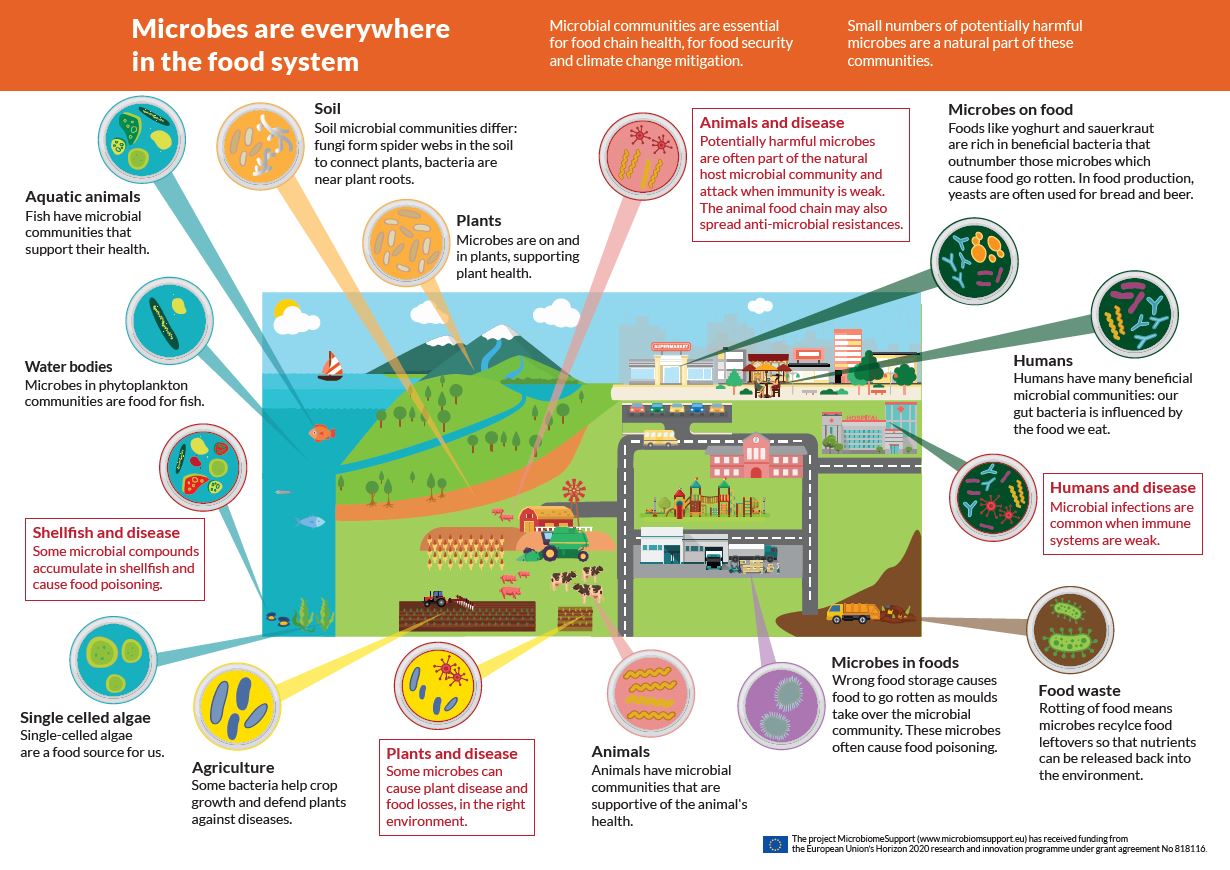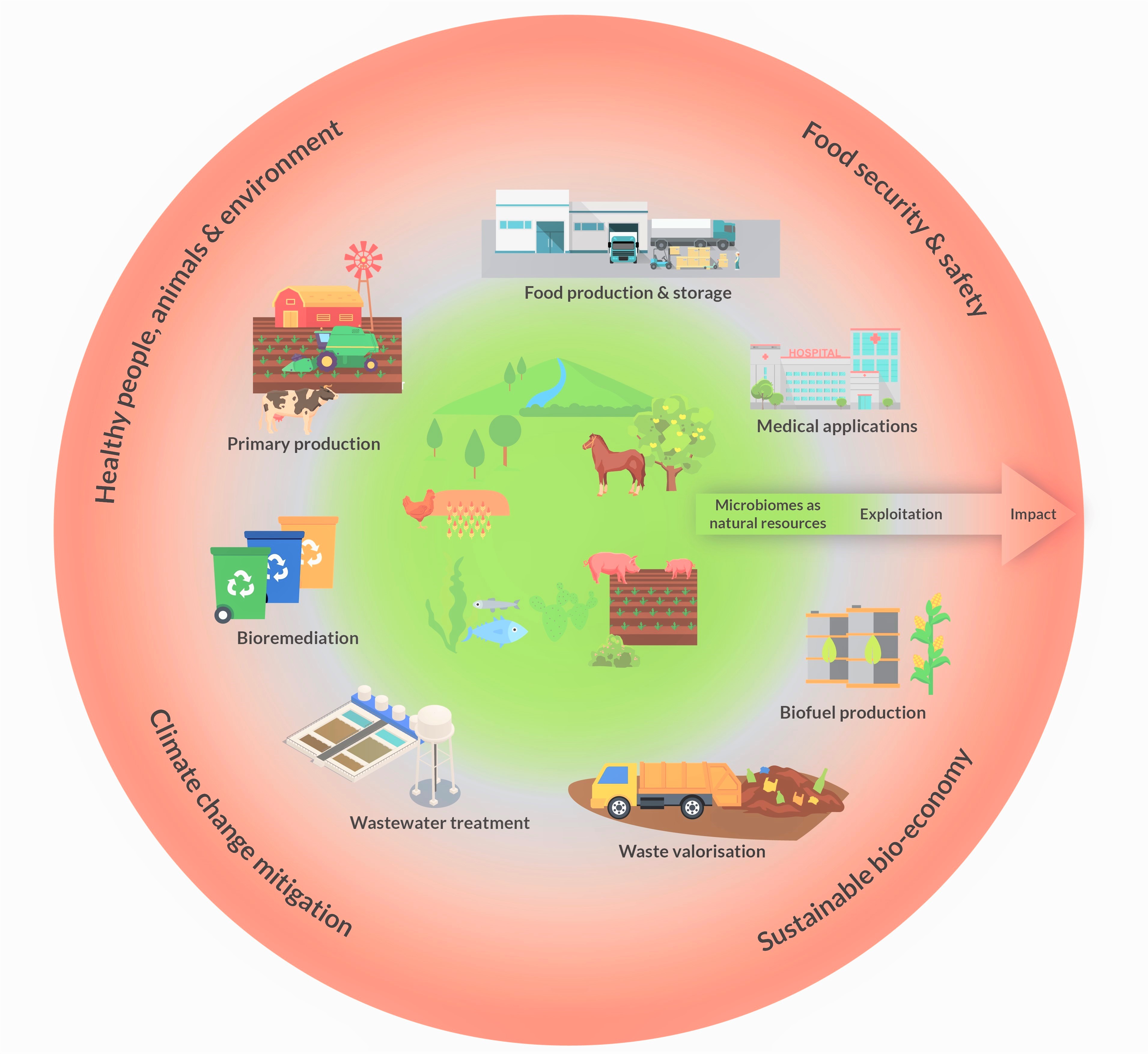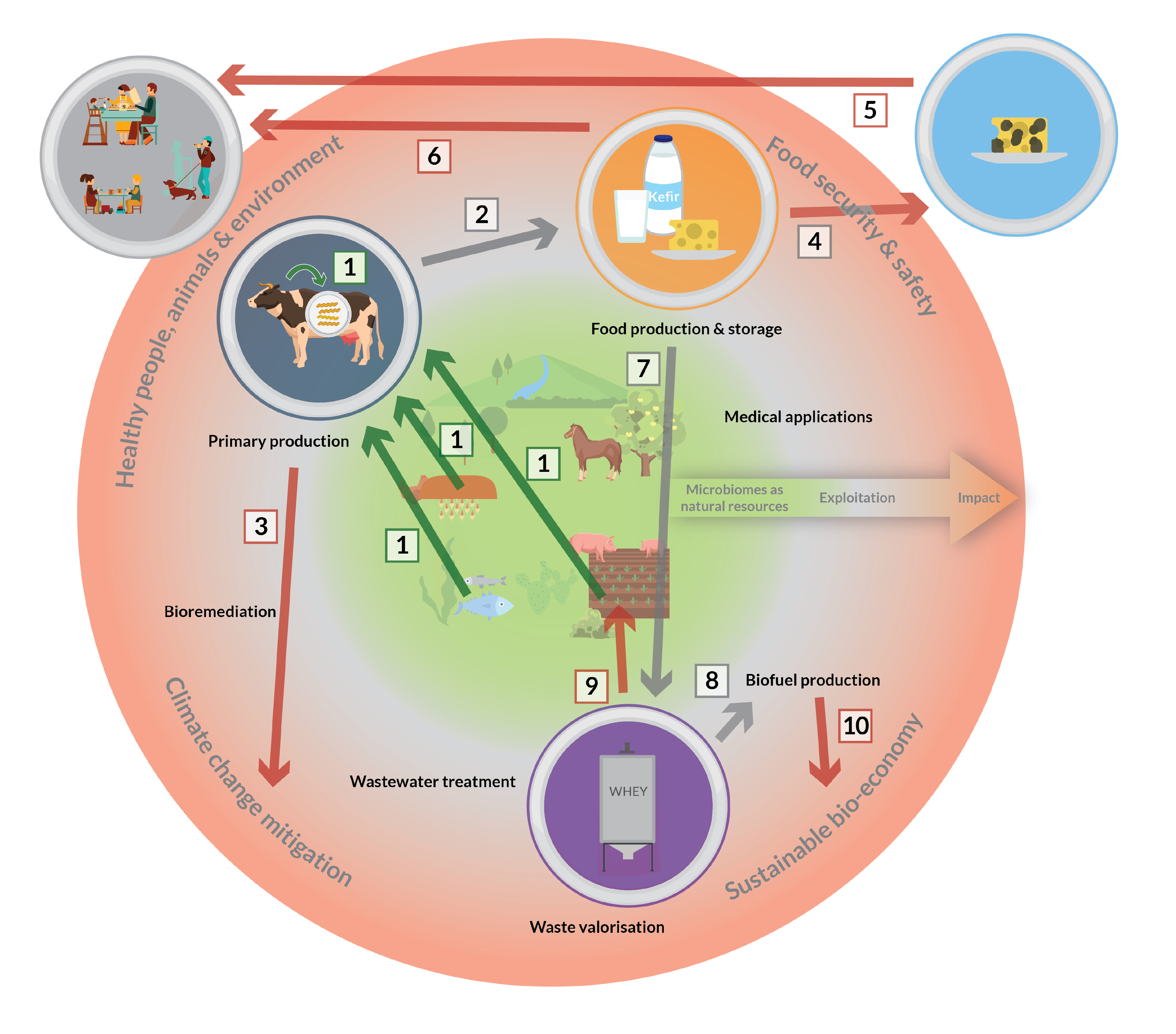Our infographics show that microbes occur everywhere in the food system and why they are important. Communities of microbes are essential in plant, animal, human and environmental health, with a consequent impact in terms of crop and livestock productivity, food quality and safety as well as for food waste decomposition and recycling processes. The composition of microbe communities differs across the food system, depending on the environmental conditions.
The MicrobiomeSupport infographics are available in a handy A4 format and in 5 different languages. You can get them in English, German, Spanish, French and Portuguese.
At the beginning of 2021, a paper written by our partners was published in the Nature Microbiology journal. The first figure from the paper illustrates that microbiomes are natural resources that exist across the ecosystem (green). They can be exploited for a range of services (grey) with a beneficial impact for a number of pressing societal matters (red).
The second figure shows how microbiomes are closely linked and outlines the complexity of interactions and impacts chains using the example of dairy. Feed & animal genetics impact the animal microbiome (1), which directly affects raw milk quality and its products (through the fermentation by their relevant microbiomes, 2) as well as climate (3). The microbiome of food products impacts on food safety (4) and ultimately human health directly and indirectly through interactions with the human gut microbiome (5, 6). Production waste (7), such as whey from cheese, can be utilised for biofuel production (8) and in animal feed (9) to support a sustainable bioeconomy (10).



